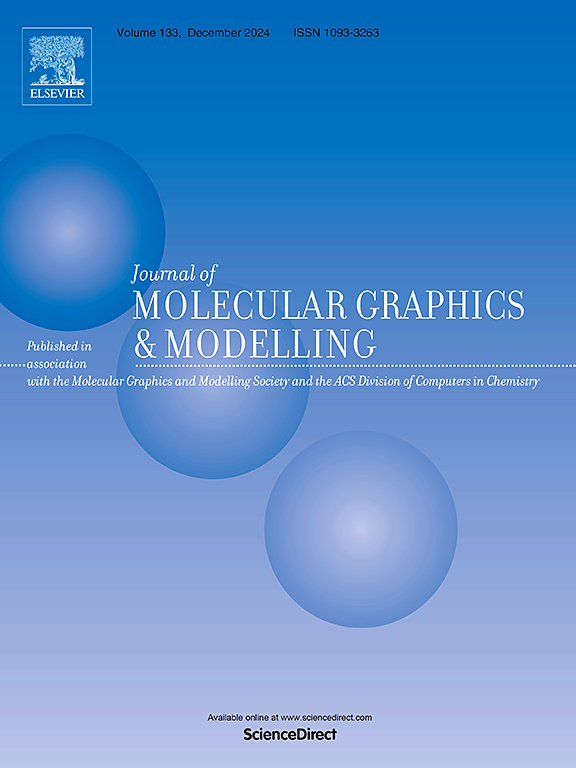对用于光催化应用的掺镉 Bi2O3 氧化物材料的物理、光电和能量损失函数特征的 DFT 见解。
IF 3
4区 生物学
Q2 BIOCHEMICAL RESEARCH METHODS
引用次数: 0
摘要
光催化水分解是可行的可持续制氢,利用水和太阳能通过高效的光催化剂。采用第一性原理法对立方Bi2O3的光催化性能进行了全面研究,并利用PBE-GGA功能表征了掺杂cd的Bi2O3的结构性质,确定了具有195空间族(P-23)的简单立方结构排列。通过总态密度(TDOS)和总态密度(PDOS)的电子分析发现,由于掺杂,bi6s和o2p轨道之间存在明显的杂化。此外,电荷密度分布突出了化学键的离子性质,进一步影响了电子和光学性质。本研究的一个关键发现是观察到的带隙(Eg),它直接影响Bi2O3在水分解应用中的光吸收效率。结果表明,掺杂镉可以有效地调整电子结构,提高光催化活性。这些见解为优化用于可再生制氢的bi2o3基材料提供了有价值的基础。本文章由计算机程序翻译,如有差异,请以英文原文为准。

DFT insights of the physical, optoelectronic, and energy loss function features of Cd-doped Bi2O3 oxide materials for photocatalytic applications
Photocatalytic water splitting is viable for sustainable H2 production, utilizing water and solar energy through efficient photocatalysts. The first-principles method was employed to investigate the photocatalytic performance of cubic Bi2O3 comprehensively, and Cd-doped Bi2O3 structure properties were determined using the PBE-GGA functional, confirming simple cubic structure arrangement with space group 195 (P-23). Electronic analysis through total density of states (TDOS) and (PDOS) revealed significant hybridization between Bi 6s and O 2p orbitals due to doping. Moreover, charge density distributions highlighted the ionic nature of the chemical bonding, further influencing the electronic and optical properties. A key finding of this study is the observed band gap (Eg) which directly impacts the light absorption efficiency of Bi2O3 for water-splitting applications. The results demonstrate Cd doping effectively tailors the electronic structure, potentially enhancing photocatalytic activity. These insights provide a valuable foundation for optimizing Bi2O3-based materials for renewable hydrogen production.
求助全文
通过发布文献求助,成功后即可免费获取论文全文。
去求助
来源期刊

Journal of molecular graphics & modelling
生物-计算机:跨学科应用
CiteScore
5.50
自引率
6.90%
发文量
216
审稿时长
35 days
期刊介绍:
The Journal of Molecular Graphics and Modelling is devoted to the publication of papers on the uses of computers in theoretical investigations of molecular structure, function, interaction, and design. The scope of the journal includes all aspects of molecular modeling and computational chemistry, including, for instance, the study of molecular shape and properties, molecular simulations, protein and polymer engineering, drug design, materials design, structure-activity and structure-property relationships, database mining, and compound library design.
As a primary research journal, JMGM seeks to bring new knowledge to the attention of our readers. As such, submissions to the journal need to not only report results, but must draw conclusions and explore implications of the work presented. Authors are strongly encouraged to bear this in mind when preparing manuscripts. Routine applications of standard modelling approaches, providing only very limited new scientific insight, will not meet our criteria for publication. Reproducibility of reported calculations is an important issue. Wherever possible, we urge authors to enhance their papers with Supplementary Data, for example, in QSAR studies machine-readable versions of molecular datasets or in the development of new force-field parameters versions of the topology and force field parameter files. Routine applications of existing methods that do not lead to genuinely new insight will not be considered.
 求助内容:
求助内容: 应助结果提醒方式:
应助结果提醒方式:


